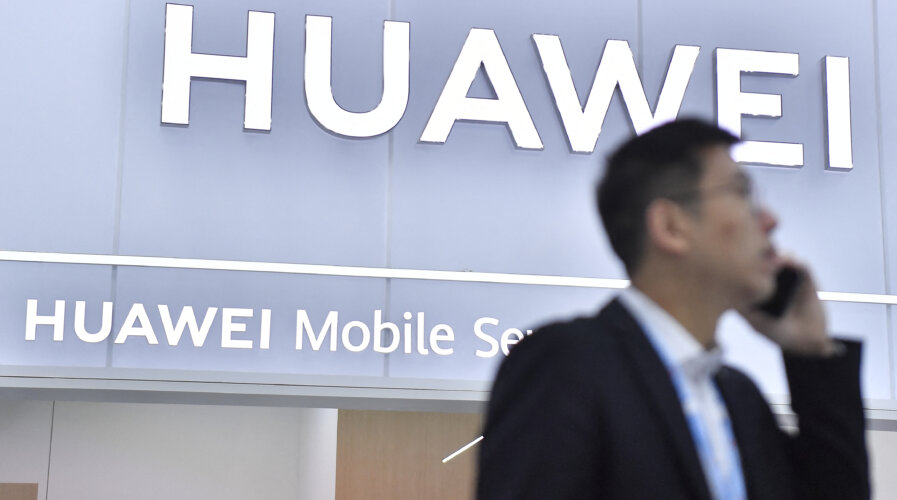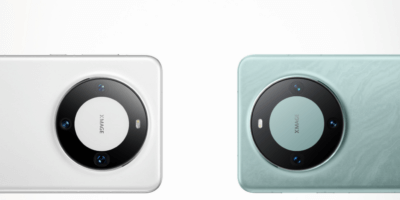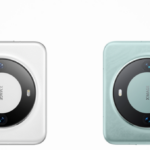
A visitor stands next to the Huawei stand at the Mobile World Congress (MWC). (Photo by Pau BARRENA/AFP).
Huawei: no breakthrough, just a Taiwan-made chip powering the latest laptop
- TechInsights confirms that the HiSilicon Kirin 9006C in the Qingyun L540 laptop by Huawei is manufactured by TSMC, ending debates about SMIC involvement.
- The packaging closely resembles the HiSilicon Kirin 9000 and was done in week 35 of 2020.
- The 5nm chip was manufactured by TSMC in 2020, coinciding with the period when US sanctions restricted Huawei’s access to chipmakers.
In a tech upheaval last August, Huawei ignited waves of discussion in the US and China by unveiling a smartphone with a 7nm processor crafted by Shanghai-based Semiconductor Manufacturing International Corp. (SMIC). A meticulous teardown conducted by a Canada-based research outfit, TechInsights, later revealed that the chip inside the Mate 60 Pro, though not at the absolute forefront, remarkably skirted the cutting edge—contrary to the intended impact of stringent US trade curbs.
This unexpected revelation triggered jubilation within the Chinese tech sphere, and sparked a lively debate in the US about the efficacy of imposed sanctions. In the Mate 60 smartphone, Huawei showcased innovation and solidified its position at the vanguard of China’s journey to break free from Western technologies and foster homegrown alternatives.
The allure of the Mate 60 captivated Chinese consumers in the last quarter of 2023, propelling Huawei past the symbolic US$100 billion revenue milestone. In this triumph, the company regained financial stature and chipped away at the towering dominance of Apple Inc.’s iPhone. After all, the US government has been blocking China’s access to semiconductors of 14-nm or better since 2022.
The Mate 60 Pro smartphone by Huawei, powered by the domestically developed Kirin 9000S chip manufactured by China (SMIC), reflects significant progress in China’s quest to improve its domestic chip production ecosystem. “It is very concerning, but we’re going to take the strongest action to protect the US,” the US Commerce Secretary Gina M. Raimondo told Bloomberg on December 11 during her visit to China.
Raimondo’s remarks might have come off as a face-saving measure considering the efforts made by the US to prevent China from manufacturing such components. Until recently, SMIC was known for producing parts with a maximum of 14nm. However, a teardown study of the Mate 60 Pro by TechInsights for Bloomberg indicates that China can now have 7nm components, despite opposition from the US and its allies. It’s easy to extrapolate from there that the US tech clampdown has failed.
Huawei: smartphone and laptops with more advanced chips is the start of many more

Inside the new Huawei laptop.
During the company’s annual conference in China last month, Huawei CEO Richard Yu declared that the company will launch more leading and disruptive new products in 2024. “We will continue to exceed everyone’s expectations,” he said.
In the same month, Huawei took the world by surprise again, this time with a new laptop, equipped with an even more advanced chip: the 5-nm application processor (AP).
According to the Huawei website, the new laptop, the Qingyun L540, is powered by the Kirin 9006C AP chip made through a 5-nm process. It has an eight-core architecture and a clock speed of up to 3.13 gigahertz (GHz). Venturing into the realm of 5-nm technology marks a significant stride for the Shenzhen-based tech giant, placing it closer to the cutting-edge processes predominantly focused on 3nm nodes.
The 5nm feat by TSMC, not SMIC

What’s under the hood of the new Huawei laptop? Source: TechInsights
Following a teardown of the Mate 60 Pro that TechInsights conducted for Bloomberg News in September 2023, leading to the revelation that the new Kirin 9000s chip was fabricated in China by SMIC, a similar dismantle was done on Huawei’s Qingyun L540 notebook, released last month.
The debut of the 14-inch ultralight in early December, featuring a 5nm processor, sparked intense speculation about China’s domestic semiconductor manufacturing capabilities, suggesting a more advanced state than previously believed.
This time, the teardown revealed that the enigmatic 5nm Kirin 9006C processor was made by chip giant Taiwan Semiconductor Manufacturing Co. (TSMC) rather than a Chinese manufacturer. An investigation into the origin of the underlying silicon showed that “analysis confirms with high confidence that the HiSilicon Kirin 9006C is indeed manufactured by TSMC, dispelling debates about SMIC involvement.”
The findings also show that the notebooks’ processor strongly resembles the HiSilicon Kirin 9000, which was packaged in the 35th week of 2020, the team concludes. “The die uses the same BEOL [back end of line] stack and process node that TechInsights has reported for the Kirin 9000 processor.”
Huawei’s acquisition of a three-year-old processor remains unclear, but the Chinese company has been building semiconductor reserves since facing global access restrictions. Despite being on the Washington Entity List since 2019, TSMC only stopped fulfilling Huawei orders in 2020 to comply with heightened US trade restrictions.
READ MORE
- 3 Steps to Successfully Automate Copilot for Microsoft 365 Implementation
- Trustworthy AI – the Promise of Enterprise-Friendly Generative Machine Learning with Dell and NVIDIA
- Strategies for Democratizing GenAI
- The criticality of endpoint management in cybersecurity and operations
- Ethical AI: The renewed importance of safeguarding data and customer privacy in Generative AI applications




